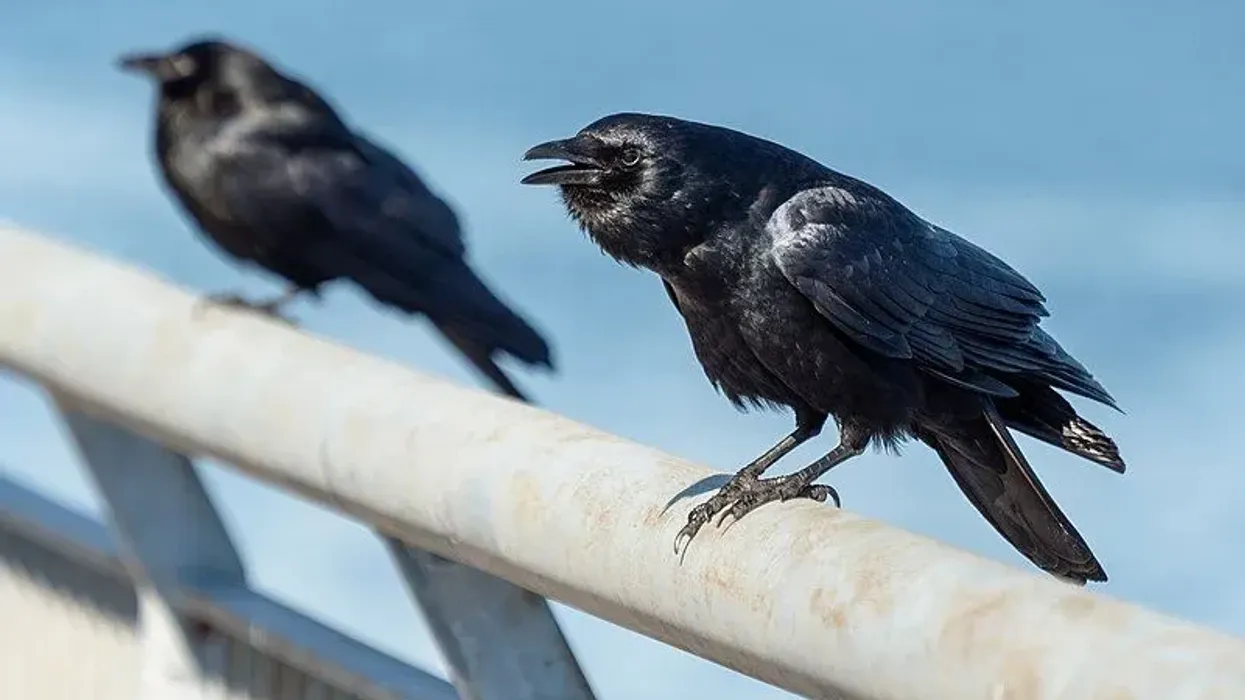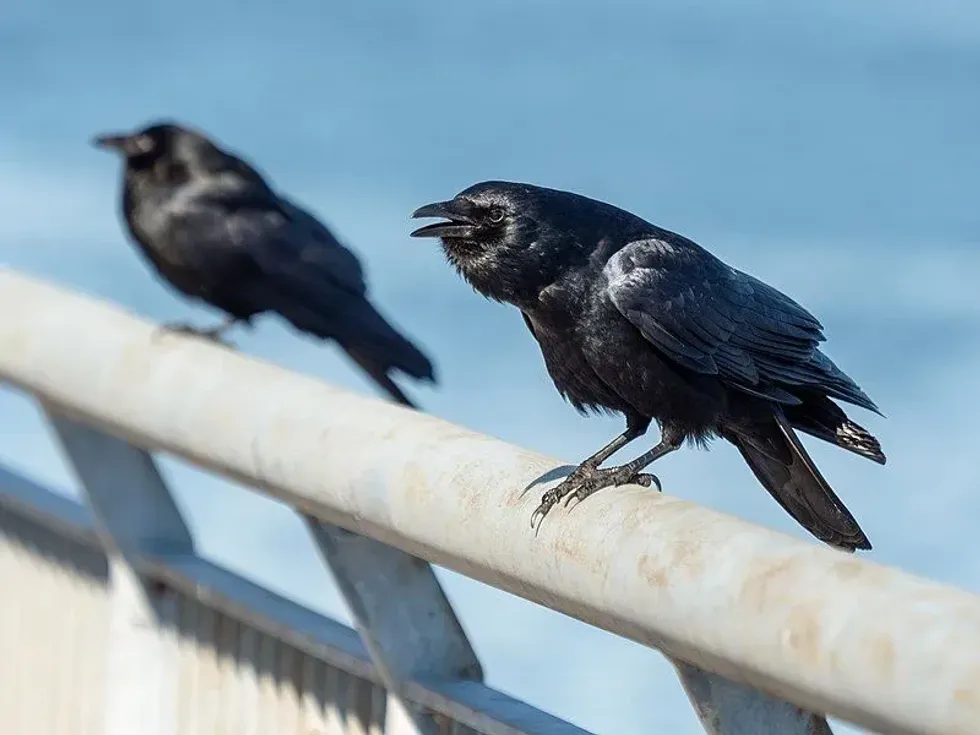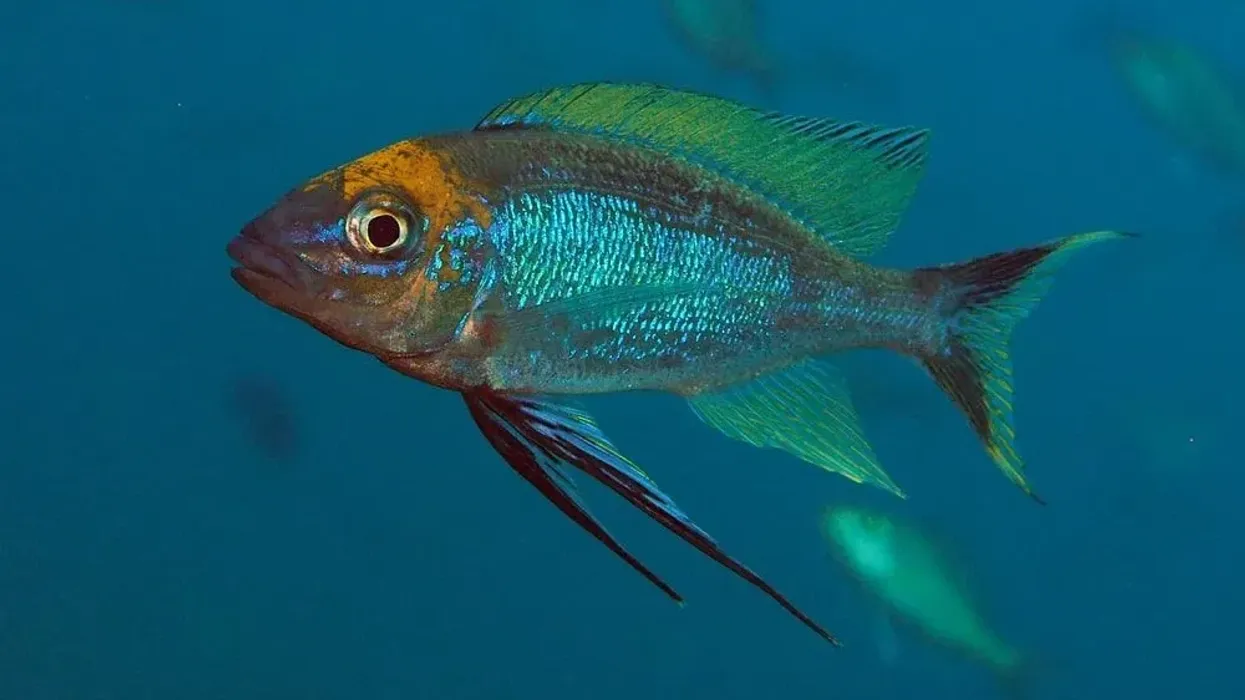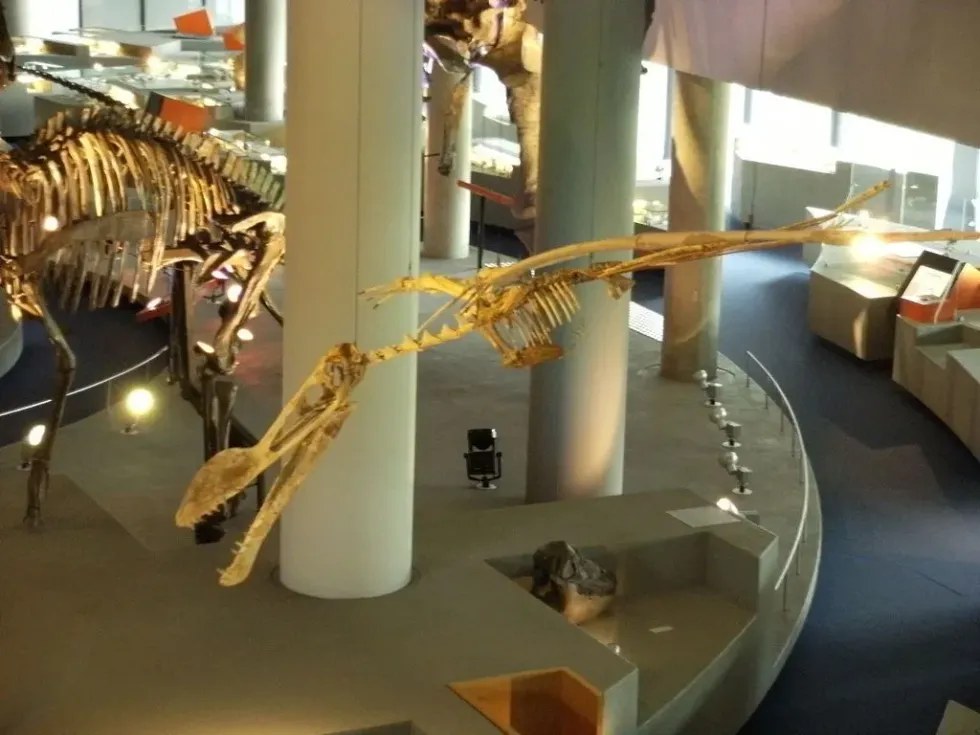The Fish crow (Corvus ossifragus) belongs to the order Passeriformes, the family Corvidae of animals. The bird's habitats focus on the regions around the coast and shore during the winter and near the inland locations during the warm time of the year.
Their habitats are favorable for their steady increase hence, their conservation status is considered to be of Least Concern.
The male and the female bird together build their nest during the breeding season for laying the eggs. Their nest consists of dry twigs, pine needles, hairs, and grasses and most of them would even cover the outer layer of their nest with mud.
The eggs are laid anytime between March to June after which the pair looks after the chicks until they get ready to fledge.
Here's a fun fact about these birds; the fish crows are known to sunbathe and even take a proper bath during the rain.
During the summers they dip their chest in the water and then the wings and throw the water on their back to be fully covered with water. To learn more such interesting facts, keep reading.
For more facts about crows check out the carrion crow and hooded crow.
Fish Crow Interesting Facts
What type of animal is a Fish Crow?
The Fish crow (Corvus ossifragus) is a bird belonging to the Corvidae family of the Animalia kingdom.
What class of animal does a Fish Crow belong to?
Fish crows are birds that belong to the Aves class of animals.
How many Fish Crows are there in the world?
Although the exact number of these fish crows is not yet known, their population seems to be increasing and their conservation is marked as of Least Concern.
Where does a Fish Crow live?
The habitat for these North American crows is vastly found in the regions of North America. They are found in the coastal areas and near the rivers and inland lakes of New York, Key West, Bahama, Arkansas, and the west of the northern Gulf of Mexico.
What is a Fish Crow habitat?
These freshwater North American crows' habitat is usually focused around the coastal areas or in the wildlife near the rivers and inland lakes. They live on the beaches, marshes, and estuaries.
These North American birds' nests can also be found on trees in parks, and gardens, as well as the trees in cities, landfills, and docks. These birds travel in flocks during the winter season.
Who do Fish Crows live with?
Fish crows are one of the most social North American birds. They are usually seen in their flocks of similar species and pairs. They are also seen searching for their food on the ground in their flocks or pairs.
How long does a Fish Crow live?
The crow species that belong to the order Passeriformes, family Corvidae is known to have a lifespan of 7-14 years.
How do they reproduce?
The male and female birds have one brood per breeding season. The male tries to show affection towards the female by either feeding the female or tapping her beak.
Once the female reciprocates, both the birds start finding a place for the nest together. Both the birds together build their nest on top of the trees. This nest is built with dry twigs, pine needles, mud, hair, and other such material.
The female fish crows then lay their eggs in the nest. These eggs are usually in a clutch with a minimum of two to a maximum of six eggs.
The female bird is the one who incubates the eggs. The incubation period goes for 16-19 days. Once the young ones hatch, both the parent birds take care of their young ones.
The male fish crow looks after the food requirements and makes sure to save the young ones from predators and other threats. The pair of this bird is also known to teach the young ones to forage for their food in marshes, near the river, on the ground, and in the wildlife before the nestlings leave their nest.
What is their conservation status?
These North American birds are marked as Least Concern by the International Union for Control of Nature (IUCN). Their population is considered to increase by the day.
Fish Crow Fun Facts
What does Fish Crow look like?
Fish crows are all-black birds with black plumage, dark brown almost black eyes, black legs, and black beaks. These birds have glossier beaks and shinier feathers than the others. As they hatch from their eggs they have a slightly lighter color that inclines towards dark brown. They molt as they grow older and turn into the all-black figure.
The adult fish crows usually go through a two-time molt season every year with no major change in their feathers and colors. Although during the second molt, their plumage has a rough texture, especially near the throat area on the body.
These crows would have a blue-green tint in their black plumage. This blue-green tint is mainly visible during the first molt.
There are no extreme variations in the male and female descriptions of the fish crows. Although the males are said to appear a little larger than the females. As these birds grow old, the feathers show a slight graying on the tips of the tail and wings.

How cute are they?
Although this bird is considered to have social behavior, they are not at all considered cute. This is mainly because of their dark appearance and screechy, unpleasant fish crow calls.
How do they communicate?
This bird is known to have a heavily vocal communication system. They vocalize every day with nasal sounds of 'awwr', 'uh-uh', and 'cawk'.
The call is usually used in case of saving the family and their nesting from predators, to mark the nesting territory, and save their nesting from similar species of fish crows in their habitat. These birds are very loud and vocal during the breeding process.
The breeding females specifically have a nasal and high-pitch call when they need help for their eggs and the nestlings from the males. The fish crow sounds are distinct and they do not sing or have any specific songs.
Apart from vocals, this bird is tactile too. This is mainly seen when the males try to attract and touch the females during the breeding season.
The male is seen feeding and touching the female bird before and even after the breeding process is done. The pair of this bird is said to sit close and pluck the nearby twigs for the nest. The bird can even display aggressive behavior by pulling the tail, grabbing, or pecking the opponent during fights.
How big is a Fish Crow?
This bird is considered to be double the size of the largest sparrow named Harris's Sparrow. Fish crows are as big as 14.2 in (36 cm) to 15.7 in (40 cm) in length. They might seem even bigger while taking flight as their wings have a length of around 33.1 in (84 cm).
How fast can a Fish Crow fly?
The fish crows can fly with an average speed of 30-60 mph. In the case of diving for food or while migrating with their flocks at the highest speed, they are seen to cover around 70 mph.
How much does a Fish Crow weigh?
This species of fish crows are birds with a weight range of 0.4-0.7 lb.
What are the male and female names of the species?
Fish crow can be considered a neutral term that is used for both genders.
What would you call a baby Fish Crow?
Once the eggs hatch, the babies of fish crows are either called nestlings, hatchlings, or chicks like any other bird species.
What do they eat?
Fish crows are birds of North America that belong to the order Passeriformes, family Corvidae and are omnivores in nature. Their habitat revolves around the inland lake or river, estuaries, and marshes around the coast where they can have easy access to food items that involve small fish, crabs, and small reptiles too.
Their food diet also includes small birds and their eggs, insects, and nestlings too. Their non-meat food diet usually involves waste grains, and garbage dumps, mostly focusing on human scratches, seeds, and fruits.
Would they make a good pet?
Different studies conducted by the Cornell Lab of Ornithology, and many other behavior studies suggest that crows belonging to any genus and species cannot be trained.
They are wild animals and it is not just difficult to keep them as a pet but also considered to be illegal by law to keep fish crow, American crow, or any other species of crow in captivity without a special permit.
Did you know...
Although these birds are social and build their nest in trees closer to each other, these birds are not counted as colonial species. Hence, the size of their colony is not yet known.
These birds travel during March and April to search for a setting favorable for breeding. They have been seen nesting in the inland marshes and trees closer to the river or water bodies during the summertime and shifting towards the coast and shores during the winter and colder seasons.
These birds feed on the edge of the water bodies and the ground. They do not walk but hop from one place to another while foraging for their food.
Which is bigger, a Raven or a Fish Crow?
Raven crows are no doubt bigger than fish crows. Raven crows are the size of a red-tailed hawk with a longer body and wings than the fish crow. The ravens have a wedge-shaped tail while the fish crows have a shorter and a little curved tail.
How to tell the difference between Fish Crow and American Crow
The fish crow (Corvus ossifragus) is similar to the American crow (Corvus brachyrhynchos), but the major difference is that the fish crows are smaller in size than American crows. Based on their appearance, the following points would help in creating a successful fish crow vs American crow classification.
Both the birds have black all-overs and have steady conservation history. Although the American crows have longer wings, slimmer and longer bill, and non-fluffed throat that helps them to keep their neck straight.
Fish crows on the other hand have comparatively shorter wings, medium-length hooked bills, and a fluffed throat plumage that enhances their hunched neck. The fish crows have comparatively shiny plumage than the Americans.
When it comes to distinguishing the sounds of the American and fish crow, fish crows have a nasal tone to their call which is usually a sound of 'uh-uh' or 'awwr', whereas the American crow has the typical sound of 'caw-caw'.
Here at Kidadl, we have carefully created lots of interesting family-friendly animal facts for everyone to discover! Learn more about some other birds from our Pigeon Guillemot fun facts and little crow interesting facts pages.
You can even occupy yourself at home by coloring in one of our free printable Fish Crow coloring pages.









